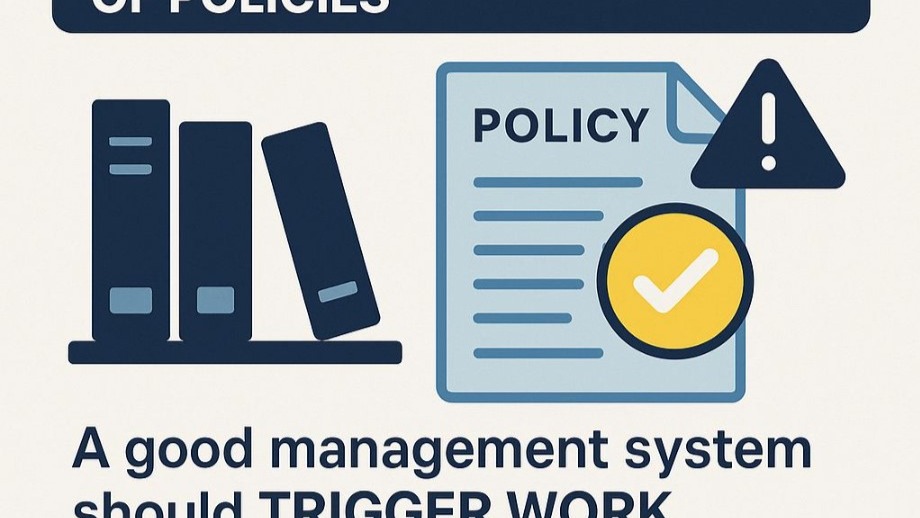Many organisations fall into the trap of treating ISO 27001 as a documentation-ticking exercise. They write policies and define procedures, but despite the paperwork, little changes in how people work.
It’s easy for an ISO implementation to turn into a bureaucratic exercise. A good implementation of an Information Security Management System (ISMS) is to consciously build a management system that triggers action.
Policies Alone Don’t Create Security — People and Actions Do
It’s easy to write a policy that says, “The training plan will be reviewed annually.”
It’s much harder to ensure that someone is actually reviewing it.
Unless a system prompts the review, assigns it to a specific person, and tracks the outcome, the intent behind the policy remains unrealised. No one is held accountable. The task gets forgotten the moment the ISO implementation is over.
Actually, the disconnect between intent and action violates the core principles of ISO 27001!
Clause 5.1 - Leadership and Commitment - requires top management to ensure that the ISMS is integrated into the organisation’s business processes—not just written down in a binder.
Furthermore, Clause 7.2 — Competence reinforces the need for actual implementation of training and awareness, not just planning.
Where Traditional ISO Systems Fall Down
In traditional systems, information security policies are often developed and reviewed in isolation from operations. They are stored in shared drives or printed into manuals.
- A policy without action is not a control—it’s a hope.
- A procedure that’s not followed is just admin theatre.
- A system that doesn't trigger work is not a system at all.
From an auditor’s perspective, this results in non-conformities—not because your policy was poorly written, but because there is no demonstrable evidence that the organisation is doing what it says it does.
- Clause 9.1 — Monitoring, Measurement, Analysis and Evaluation demands that organisations evaluate the performance and effectiveness of their ISMS activities.
- Clause 10.2 — Nonconformity and Corrective Action requires you to act when things fall short—and they will, unless actions are clearly assigned and tracked.
The Shift from Passive Documents to Active Systems
To build a truly effective ISMS, you need to shift from passive documentation to active execution.
This means your system should:
- Trigger tasks based on recurring events (e.g., annual policy reviews, quarterly risk assessments)
- Assign accountability to individuals with deadlines and visibility
- Track progress and escalate when actions stall
- Provide evidence of completion for audits and reviews
It’s no longer enough to say, “We do this.”
You need to prove it—consistently, traceably, and at scale.
How MS Frog Bridges the Gap Between Policy and Action
This is where MS Frog comes in. It’s not just a platform for storing your ISO 27001 documents. It’s a tool designed to turn your policies into real-world tasks.
With MS Frog:
- Tasks are automatically triggered based on your ISO controls and timelines.
- Actions are assigned to real people—not generic roles; with reminders when the tasks are not completed.
- You get a view of what’s overdue, what’s in progress, and what’s complete; and who in your organisation is falling behind on his or her tasks
- Every audit evidence may be assigned to a separate task so that the Non-Conformity or Opportunity for Improvement is actually addressed
- Before each Management Review Meeting (MRM) or Internal Audit, MS Frog shows what tasks were generated in the prior MRM or IA and which ones were completed and which ones were not.
For organisations seeking ISO 27001 certification or looking to improve their ISMS, this shift from description to execution is critical.
Actions Build Resilience
In a world where threats evolve constantly and regulators demand evidence, your ISMS must be alive. It must breathe, respond, and adapt.
A shelf full of policies won’t help you respond to a ransomware incident.

